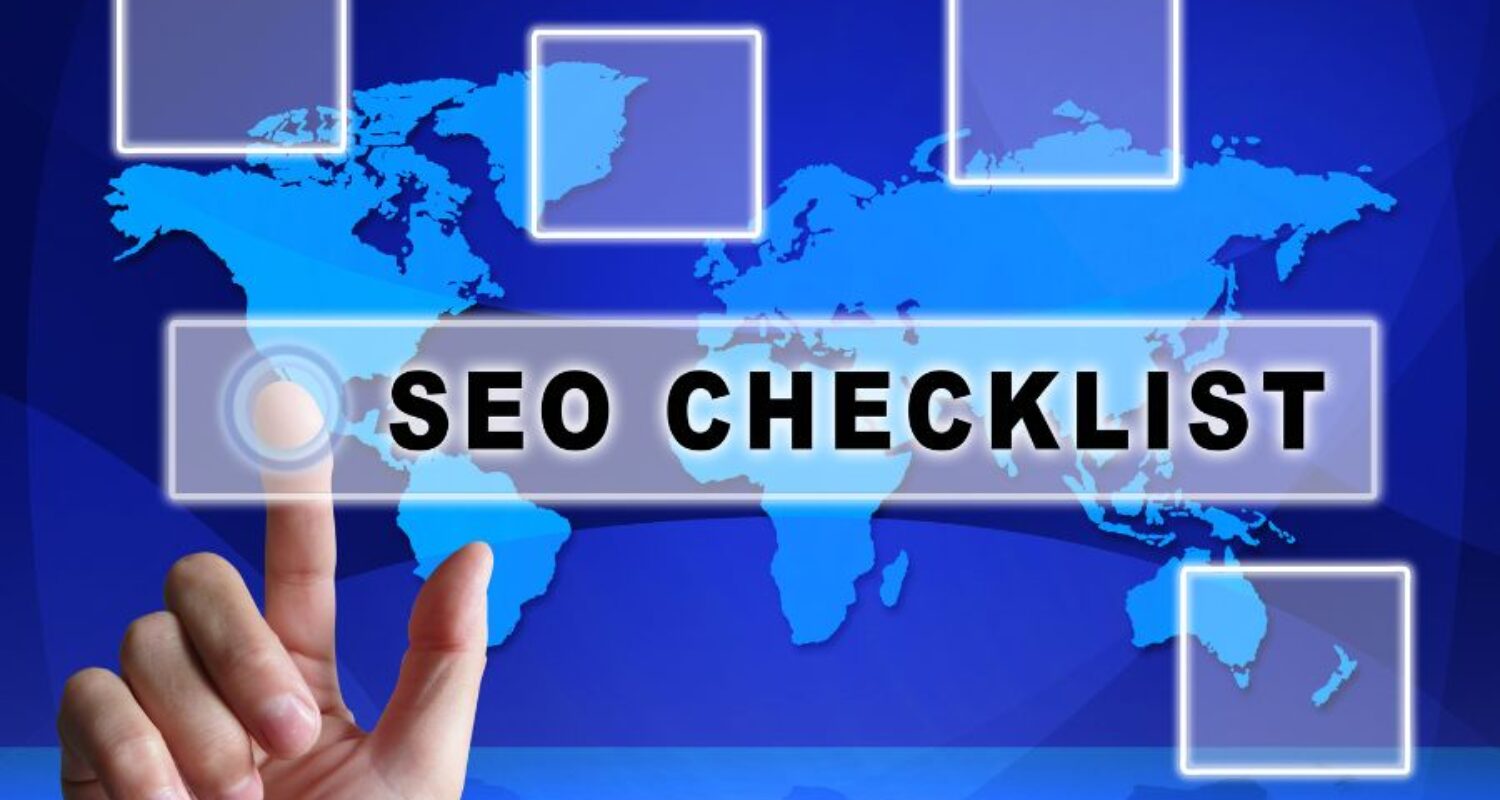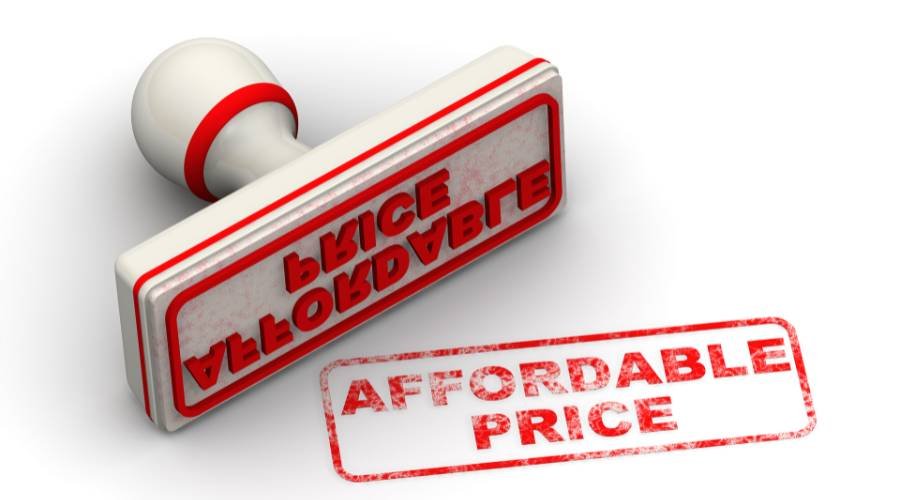In Australia, online stores know how key search engine optimization (SEO) is. It boosts visibility, traffic, and sales. Our detailed e-commerce SEO checklist helps you stay ahead in the SEO world. It aims to elevate your online store’s success.
This guide will share vital strategies and methods for better search engine rankings. It’s all about improving your site’s performance and sales in Australia. From basic SEO to advanced tactics, this checklist is your path to success.
Key Takeaways
- Understand the role of SEO in online retail success and the key components of e-commerce search optimization.
- Optimize your site structure and technical aspects to enhance search engine visibility.
- Implement a complete e-commerce SEO checklist, including on-page optimization, technical SEO, and content strategy.
- Develop a mobile-first optimization and page speed enhancement strategy to improve user experience and Core Web Vitals.
- Utilize advanced SEO techniques, build a solid backlink profile, and measure your SEO performance to drive long-term success.

Understanding E-commerce SEO Fundamentals
In the fast-paced world of online shopping, SEO is key to getting more visitors and sales. By learning the e-commerce SEO basics, Australian store owners can reach online retail success. They can also use the power of search optimization to their advantage.
The Role of SEO in Online Retail Success
SEO is at the core of e-commerce success. It helps your products and services show up when people search for them. By making your website better, you can get higher in search rankings. This makes your store easier to find and more attractive to your audience.
Key Components of E-commerce Search Optimization
Good e-commerce search optimization needs a few key things:
- Keyword research and integration
- Optimized product titles, descriptions, and metadata
- Streamlined site navigation and user experience
- Leveraging rich media and visual content
- Implementing technical SEO best practices
Setting Realistic SEO Goals for Your Store
To get the most from your SEO, set realistic goals that match your business aims. This could be more organic traffic, better product visibility, or more sales. By setting goals you can reach and tracking your progress, you can improve your strategies. This helps you stay on course for lasting online retail success.
Site Structure and Technical Analysis for Online Stores
E-commerce is now a big part of the retail world. Making your online store’s site structure better and focusing on technical SEO is key. This helps bring in more organic traffic and increase sales. We’ll look at the important parts of site structure analysis and technical SEO for e-commerce sites.
Organizing Your E-commerce Website Architecture
A good e-commerce site starts with its architecture. It’s important to have a clear and easy-to-use site structure. This should match your product categories and what users expect. Here are some tips:
- Make a logical product hierarchy with clear categories and subcategories.
- Make sure navigation is smooth and easy for users.
- Use internal linking to help search engines find and rank your pages better.
Addressing Common Technical SEO Challenges
Technical SEO is also vital for your e-commerce site’s success. We’ll talk about key technical areas to focus on:
- Work on making your site faster and improving Core Web Vitals.
- Make sure search engines can find and index your product pages well.
- Use schema markup and structured data to help search engines understand your site better.
- Fix any duplicate content and URL issues.
- Compress images and media to make your site load faster.
| Technical SEO Factor | Impact on E-commerce Performance |
|---|---|
| Site Speed | Faster sites make users happy, reduce bounce rates, and increase sales. |
| Indexation and Crawlability | Search engines need to be able to find and index your pages well for good search rankings. |
| Structured Data | Schema markup helps search engines show your products better, leading to more clicks. |
By working on-site structure analysis and technical SEO, you can make your e-commerce website architecture better. This will help your online store grow and succeed.
Complete E-commerce SEO Checklist for 2024
To make your online store shine, you need a solid SEO plan. Our detailed e-commerce SEO checklist for 2024 has everything you need. It helps boost your site’s visibility, attract more visitors, and grow your sales.
On-Page Optimization Elements
Improving your website’s on-page elements is key for e-commerce SEO success. Focus on these areas:
- Crafting compelling, keyword-rich titles and meta-descriptions
- Optimizing product pages with relevant, high-quality content
- Implementing schema markup to enhance search engine understanding
- Ensuring seamless user experience through intuitive navigation and site structure
Technical SEO Requirements
The technical side of your e-commerce site is crucial for search engine success. Our checklist includes:
- Ensuring mobile responsiveness and fast page load times
- Implementing secure HTTPS protocol across your entire website
- Optimizing images, videos, and other media for better performance
- Submitting XML sitemaps and managing website crawlability
Content Strategy Components
A good content strategy is vital for lasting e-commerce SEO success. Key elements to focus on are:
| Component | Description |
|---|---|
| Keyword Research | Identifying the most relevant and high-intent keywords for your products and services |
| Content Creation | Developing informative, engaging, and SEO-optimized content for product pages, blog posts, and other website sections |
| Content Optimization | Refining and optimizing existing content to improve search engine visibility and user experience |
By using this detailed e-commerce SEO checklist for 2024, you’ll improve your online store’s performance. You’ll be on the path to sustainable growth in Australia’s competitive e-commerce market.
Product Page Optimization Strategies
In the world of e-commerce, making your product pages better is key. It helps your site rank higher in search engines and boosts sales. We’ll look at the important parts of making your product pages work well.
Crafting Compelling Product Descriptions
Writing great product descriptions is a big deal. You need to grab your customers’ attention with clear, detailed info. Use the right keywords, point out what makes your product special, and answer common questions. This way, your product pages will draw in and keep customers.
Optimizing Product Images
Images are very important for conversion rate optimization. Make sure your images are top-notch, easy for search engines to find, and look good. Show your products from different sides, with Zoom, and in real-life settings. This helps your products look their best.
Leveraging Customer Reviews
Real customer reviews are a big help for your product page optimization. Ask customers to share their thoughts, and show off the good ones on your pages. This builds trust and shows others that your products are worth it.
| Optimization Element | Best Practices | Potential Impact |
|---|---|---|
| Product Descriptions |
|
Improved search visibility and e-commerce product listings |
| Product Images |
|
Enhanced conversion rate optimization and visual appeal |
| Customer Reviews |
|
Increased trust and social proof for product page optimization |
By using these tips, you can make your product pages better. This will help your e-commerce product listings and increase sales. Keep reading for more ways to improve your SEO.
Mobile-First Optimization and Page Speed Enhancement
In the world of e-commerce, mobile devices are key for online shopping. Making sure your site works well on mobile is vital for sales and search rankings. Also, improving page speed and Core Web Vitals boosts your site’s performance and visibility.
Mobile Responsiveness Best Practices
To make your e-commerce site mobile-friendly, follow these tips:
- Use a responsive web design that fits all screen sizes and devices.
- Make images, videos, and media fast to load on mobile.
- Make navigation easy and touch-friendly for smartphones and tablets.
- Focus on mobile-friendly content and layout for a smooth experience.
Speed Optimization Techniques
Speeding up your site is key to a better user experience and higher search rankings. Try these methods:
- Compress images, videos, and media to reduce file sizes.
- Use browser caching to cut down on repeat downloads of static resources.
- Limit third-party scripts and plugins, and optimize them well.
- Use a content delivery network (CDN) to serve content from the nearest server, cutting down on latency.
Core Web Vitals Improvement
Google’s Core Web Vitals measure your site’s user experience. Improving these can boost your search rankings and conversions. Work on these Core Web Vitals:
| Metric | Description | Ideal Target |
|---|---|---|
| Largest Contentful Paint (LCP) | Measures the time it takes for the largest content element to become visible on the screen. | Less than 2.5 seconds |
| First Input Delay (FID) | Measures the time it takes for the page to become interactive and respond to user input. | Less than 100 milliseconds |
| Cumulative Layout Shift (CLS) | Measures the stability of the page layout, ensuring that elements do not shift unexpectedly. | Less than 0.1 |
By focusing on mobile-first optimization, page speed, and Core Web Vitals, you can offer a great experience to your e-commerce customers. This can lead to more sales and better search engine visibility.

Advanced SEO Techniques for E-commerce Success
As e-commerce grows, using advanced SEO techniques is key to success. In Australia, the digital market is very competitive. We’ll look at new strategies to make your e-commerce store stand out and keep up with search engine changes.
Dynamic URL optimization is a crucial technique we’ll explore. It helps create personalized product pages. These pages improve user experience and tell search engines about your product’s unique value. This can boost your rankings and make your products more visible.
Voice search optimization is another important tactic. With more people using voice-activated devices, optimizing for natural language queries is vital. By understanding how people search with their voice, you can create content that meets their needs and intent.
| Advanced SEO Technique | Potential Impact on E-commerce Success |
|---|---|
| Dynamic URL Optimization | Improved product page rankings and visibility |
| Voice Search Optimization | Increased visibility and engagement in voice-activated searches |
| Structured Data Integration | Enhanced search engine understanding and rich snippet display |
| Predictive Search Optimization | Anticipating customer queries and providing relevant, timely content |
By using these advanced SEO techniques, you’ll boost your e-commerce strategy. This will help drive more traffic, convert more leads, and achieve success in the Australian online market.
Building a Solid Backlink Profile for Your Store
In Australia, e-commerce entrepreneurs know how key a strong backlink strategy is. Backlinks, or links from other sites to ours, are crucial for link building. They help increase our site’s authority and visibility in search results. Building a solid backlink profile for your store is essential in today’s competitive e-commerce landscape. To achieve this, understanding the significance of backlinks—links that direct users from one website to another—is fundamental. A strong backlink strategy not only enhances your site’s authority but also improves its visibility in search engine results. This increased visibility can lead to more traffic and, ultimately, higher sales. Therefore, investing time and resources into cultivating a robust backlink profile should be a top priority for anyone looking to succeed online.
One effective method to attract quality backlinks is by focusing on creating valuable and shareable content. Blog posts, infographics, and how-to guides tailored to your niche can naturally draw links from other sites seeking to provide their audience with useful resources. Additionally, engaging with industry influencers and bloggers can open up opportunities for guest posting, where you can provide content for their site in exchange for a link back to yours. This reciprocal relationship not only fosters connections within your industry but also elevates your credibility.
Moreover, do not overlook the technical aspects of your website, as they play a crucial role in your backlink strategy. Implementing page speed optimization ensures that your store loads quickly, which can enhance the user experience. A fast-loading site can increase engagement and reduce bounce rates, leading to more organic traffic and, in turn, more backlinks. Similarly, image optimization is vital, ensuring that the visual elements of your site do not slow it down. By improving loading times and providing a seamless browsing experience, you can encourage visitors to linger longer on your site, making them more likely to link back to it.
In conclusion, building a solid backlink profile for your store requires a multi-faceted approach. By producing high-quality content, fostering relationships with key players in your industry, and maintaining optimal website performance through page speed and image optimization, you can create a sustainable foundation for long-term success. A strong backlink profile not only enhances your store’s authority and visibility but also establishes it as a reliable player in the e-commerce market. Embrace these strategies, and watch your store thrive.
Link Building Strategies
To create a strong backlink profile, we use different link-building methods. These include:
- Guest posting on relevant blogs and publications
- Joining online forums and discussion boards, sharing insights, and linking back to our store
- Working with complementary businesses for co-promotions
- Using social media to share content and get shares and backlinks
- Listing in local directories and citations to boost local SEO presence
Competitor Backlink Analysis
Looking at our competitors’ backlinks can help us improve our backlink strategy. By finding high-authority sites linking to our rivals, we can aim for reciprocal links or guest posts.
Local SEO Integration
Adding local SEO to our backlink building can greatly enhance our store’s local visibility and trust. This means optimizing our Google My Business listing, getting links from local directories and review sites, and working with local influencers and groups.
With a comprehensive backlink strategy, we can establish a strong online presence for our e-commerce store. This will help us grow sustainably in the Australian market.
Measuring and Tracking SEO Performance
In the fast-paced world of e-commerce, keeping track of your performance is crucial. By watching your SEO efforts closely, you can make smart choices that boost your online store’s success. Let’s look at the key metrics, analytics tools, and KPIs that will keep you competitive.
Tracking Essential Metrics
To see how your SEO strategy is working, focus on these metrics:
- Organic traffic: Watch how many visitors find your site through search engines.
- Conversion rates: See how many visitors do what you want them to, like buying or signing up.
- Keyword rankings: Keep an eye on where your store ranks for your chosen keywords.
- Bounce rate: Check how many visitors leave right after seeing one page.
- Average time on page: See how long visitors stay on your site.
Leveraging Analytics Tools
To keep an eye on these metrics, use top e-commerce analytics tools like Google Analytics, Google Search Console, and Ahrefs. These tools give you deep insights into your site’s performance. They help you spot where to improve and make smart choices.
Aligning KPIs with Your Goals
Set KPIs that match your e-commerce SEO goals. For example, if you want to boost online sales, focus on these KPIs:
- Revenue from organic search
- Conversion rate of organic traffic
- Average order value from organic customers
By tracking and analyzing these KPIs regularly, you can see how well your SEO is doing. This helps you make smart changes to improve your e-commerce performance.
SEO tracking is a continuous journey. Stay focused on data, be flexible, and keep improving your strategies. This will help your online store grow and succeed.
Conclusion
Implementing the right strategies can greatly improve your online store’s visibility and sales in Australia. We’ve covered the basics of e-commerce SEO and how to optimize your site. This includes making your site easy to use on mobile devices.
E-commerce SEO is a continuous effort. It’s important to keep up with new trends and best practices. By doing this, you can make your website better and attract more customers.
Take a complete approach to e-commerce SEO. This means improving your site’s structure, content, and technical aspects. With a solid understanding of e-commerce SEO and ongoing improvement, your online store can thrive in Australia.
FAQ
What is the role of SEO in e-commerce success?
SEO is key to e-commerce success. It makes your online store more visible in search results. This brings in more targeted traffic and boosts sales.
By optimizing your website, we can improve your search rankings. This ensures your products are found by your target audience.
What are the key components of e-commerce search optimization?
E-commerce search optimization includes several key areas. These are on-page optimization, technical SEO, content strategy, and off-page optimization.
On-page optimization involves product descriptions, titles, and meta tags. Technical SEO focuses on site structure, speed, and mobile-friendliness. Content strategy is about creating informative and engaging product content. Off-page optimization is about building a strong backlink profile.
How can we set realistic E-commerce SEO Checklist goals?
To set realistic SEO goals, start by analyzing your current performance. Identify your target audience and keywords. Then, set measurable objectives like improving search rankings and increasing organic traffic.
These goals should be specific, achievable, and aligned with your business objectives.
What are the best practices for optimizing product pages?
To optimize product pages, create detailed and compelling descriptions. Use high-quality images and videos. Incorporate user reviews and ratings.
Make sure your site is mobile-friendly and loads quickly. These steps improve user experience, search visibility, and conversion rates.
How can we improve the technical SEO of our e-commerce website?
Improve your site’s technical SEO by focusing on site structure and architecture. Ensure efficient crawling and indexing. Optimize images and media, and implement schema markup.
Address website speed and mobile-friendliness issues. These technical improvements can boost your search rankings and user experience.
What are the best strategies for building a strong backlink profile?
To build a strong backlink profile, focus on outreach and guest posting. Leverage partnerships and collaborations. Create valuable and shareable content.
Analyze your competitors’ backlink profiles for opportunities. A diverse and high-quality backlink profile enhances your site’s authority and visibility.
How can we measure and track the performance of our e-commerce SEO efforts?
To measure your SEO performance, monitor organic traffic, search engine rankings, and conversion rates. Also, track bounce rates and revenue from organic search.
Use analytics tools and regularly review your SEO performance. This helps you make data-driven decisions to optimize your strategies and achieve your goals.




